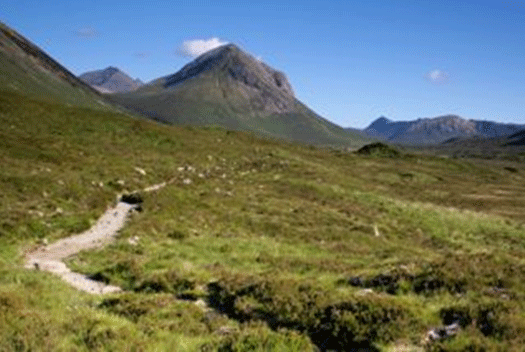MacLeod
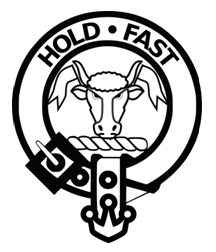
-
Clan Territory:
MacLeod lands are traditionally: the island of Sky and the island of Harris, although in earlier centuries, clan Macleod territories included North Uist, Lewis and Assynt on the north west mainland. -
Clan Chief:
The current chief is Hugh Magnus MacLeod, the 30th chief of the clan.
-
Clan Castle:
-
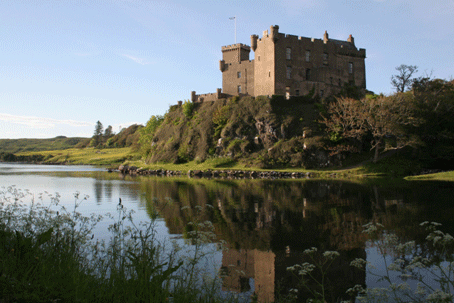
Dunvegan CastleDunvegan Castle is the oldest continuously inhabited castle in Scotland and has been the stronghold of the Chiefs of MacLeod for nearly 800 years. Built on a rock, it has survived clan battles, the extremes of feast and famine and the profound social, political and economic changes through which the Western Highlands and Islands have passed.
-
Clan Tartan:

-
Clan History:
There are two branches of this ancient Scottish clan: Macleod of Harris and Dunvegan, and MacLeod of Lewis. However, the MacLeod influence on Lewis was lost to the MacKenzies in the 16th and 17 centuries and the chiefly line was extinguished. The MacLeods of Lewes are represented by (Torquil) Donald Macleod of the Lewes According to Clan histories, the name MacLeod was derived from an Old Norse nickname "Ljótr" meaning "ugly" and the original man chief who bore this name "Leod" (pronounced "lodge" in Gaelic) was said to have been descended from the Norse King Olaf the Black of the Isle of Man and the Hebrides.
Tradition gave Leod two sons, Tormod - progenitor of the Macleods of Harris and Dunvegan (Sìol Thormoid); and Torquil - progenitor of the Macleods of Lewis (Sìol Thorcaill). The MacLeods also established themselves on the mainland in Assynt - and Strathpeffer on the other side of Ross and Cromarty. Castle Leod in Strathpeffer was eventually taken over by the MacKenzies.
Both branches of the MacLeods supported the MacDonald Lord of the Isles, who acted as independent kings on the west coast. But when the fortunes of the MacDonalds reversed after the forfeiture of the Lordship of the Isle, in 1493, the MacLeods and MacDonalds began feuding. The result was a terrible period of bloody anarchy in the Hebrides.
Alexander MacLeod, 8th Chief of Harris, known as Alasdair Crotach, led the clan through much of this barbaric time. Crippled by a dreadful wound, which he received at the Battle of Bloody Bay, Alasdair Crotach (the name means hunchback in Gaelic) ordered the massacre of most of the MacDonald population on the Island of Eigg. Despite the culture of feuding and bloodshed, the traditional Gaelic arts flourished under the stewardship of Alasdair Crotach: music, dancing and poetry were all encouraged – as was the piping college for the famed masters of the pipes, the MacCrimmons – who for centuries have been pipers to the MacLeod chiefs.
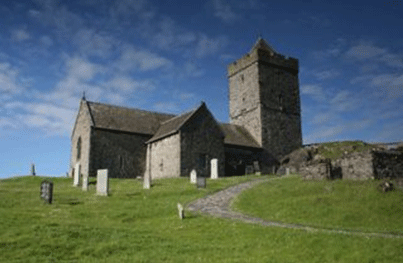
Rodel Church HarrisAlasdair Crotach spent the last years of his life as a monk at the holy church of Rodel on Harris. There, visitors can see his impressive tomb, which boasts a beautiful carving of a Birlinn, or West Highland Galley – a prized warship of the day.
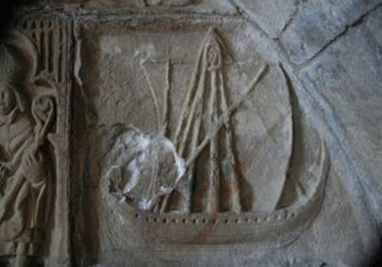
Birlinn or West Highland GalleryFilmed on location to the highest standards the Galloglas DVD, MacLeod features unique stories that interweave romance, adventure, bravery and betrayal, set against a stunning landscape. This DVD is not yet available; if you would like to be informed of the release date please email alexandria@greatscottishclans.com
-
Famous MacLeods:
Rory Mor once entertained the visiting king James the Vth to a lavish feast. Rory was desperate to impress the monarch. He had recently visited Holyrood palace and had boasted that his hall in Dunvegan was much grander. In reality of course, it wasn’t; so when the king arrived on Skye Rory Mor feared that he’d be exposed by his empty boast. But instead of taking the king to Dunvegan, the MacLeod chief took the monarch up to the top of a nearby flat-topped mountain. Here he was presented with an amazing sight: hundreds of Clansmen holding flaming torches to light the open-air feast. MacLeod legend has it that Alasdair told the King: ‘Here is my Hall, its floor the mighty deep, its roof the canopy of Heaven. My table is 2000 feet high and here bearing the lighted torches are your loyal servants’.
-
And finally:
Eviction and clearance savagely reduced the MacLeod population in its homeland. When Dr Johnson and his biographer visited Dunvegan on the second of October, 1773, James Boswell recorded a dance put on for their entertainment: ‘We performed with much activity, a dance which, I suppose, the emigration from Skye has occasioned. They call it America. Each of the couples … successively whirls round in a circle, till all are in motion; and the dance seems intended to show how emigration catches, till a whole neighbourhood is set afloat.’
